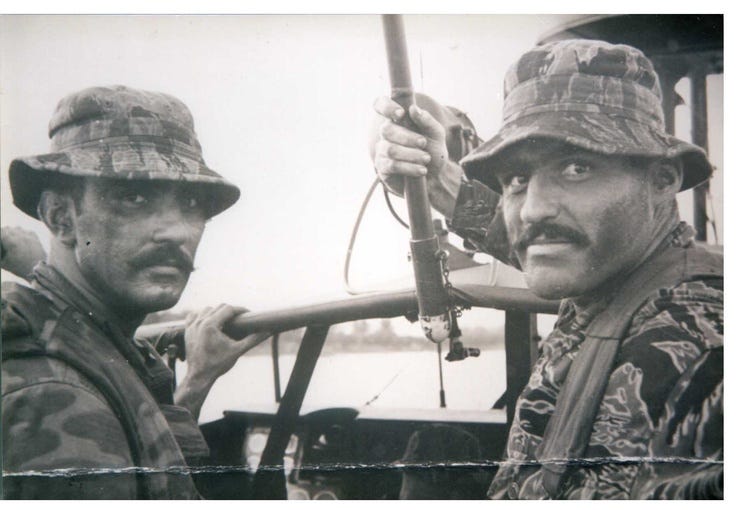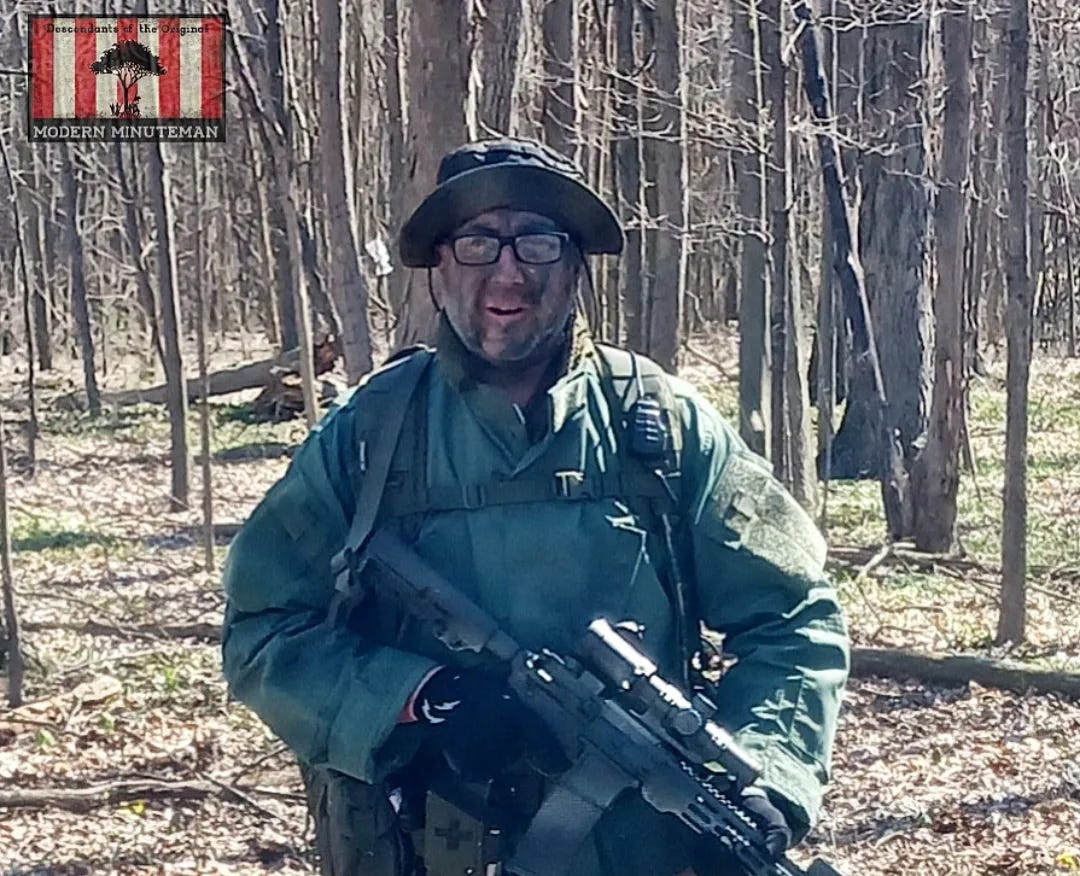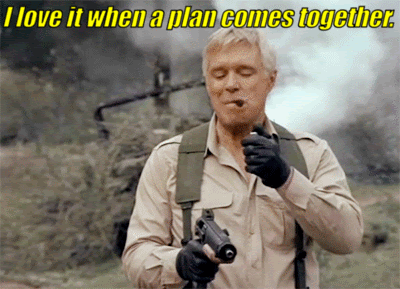THE MINUTEMAN Volume 14, June 2024
Boonie Hats, Comms Goals, and Making a Plan...
THE BOONIE HAT
Ah, the classic Boonie Hat! It’s appearance invokes images of MACV-SOG operators, Green Berets, and Navy SEALS in the thick jungles of Vietnam!
I have fond memories of my Uncle Denny wearing an OD Boonie Hat (which I continue to wear today) and the stories he would tell from his time in Vietnam. The first time my wife ever met my uncle he was wearing that Boonie Hat while cleaning an AK. It’s an image etched into my memory.
But let’s talk about the history of this iconic hat. You could go back 100+ years and find examples of Boonie “style” hats being used in the military. Picture old fishing hats (commonly referred to as Bucket Hats) that were popular in coastal fishing villages. Then you had a similar hat (these were nicknamed the “Daisy Mae” made of denim that showed up in the 1930’s that were issued to troops and these closely resembled the Boonie Hat we know today. During WWII the British had their “Bush Hat’ and the Australians had their “Giggle Hat” and all were popular with troops due to their comfort and practical use in warm climates.
But the Boonie Hat as we know it didn’t gain notoriety until the Vietnam War and their use by MACV-SOG, SEALS, Green Berets, and LRRP’s. They were produced in countless local shops from scrap uniform materials in Tiger Stripe, ERDL, and OD Green. Some had short brims while others had wider, floppy brims, with others even having insect netting sewn into them. It wasn’t until 1967 that the Boonie started becoming an issued item to go with regular patrol caps and baseball hats. The Boonie Hat has since gone on to be worn in all conflicts around the world.
Folks have realized the advantages of the Boonie for sun/rain protection, its shapeless form helps break up the wearers silhouette, vegetation can be easily added to it via the sewn loops for better camouflage effectiveness, and they are easily customizable to suit the wearers needs by adding map pockets or Hi-Viz panels inside for signalling.
I have found myself wearing Boonie Hats more and more for patrolling, they’re comfortable, keep the sun and rain off me, and help break up the silhouette of my head in the field.
*Guest Author series*
DEFINING YOUR COMMS GOALS AND PRIORITIZATION
BY: PNWMINUTEMAN
What follows is a generic overview of things to consider when forming your “comms plan” or “road map” to reaching your goals in the communication arena.
The complete series will be a deeper dive showing what is required to achieve some of the more common goals, but the first step should be writing down what you want to accomplish when it comes to radio comms.
Not everyone needs HF equipment to talk across the world or radios with built-in encryption for “unbreakable” tactical comms. Both of these endeavors come with a heavy price tag in equipment as well as steep learning curves.
While “Weak Signal Digital Modes” are absolutely the best method for transmitting and receiving information when it comes to regional comms (Coast to Coast), for the most part the “juice will not be worth the squeeze” for individuals as again, the learning curve is steep.
Unlike transmitting signals though, receiving is much easier to learn and much more cost efficient. If you are completely new to radio, you probably “don’t know what you don’t know” which makes it hard to make a list.
If you are interested in what can be done off-grid and without anyone else’s infrastructure, then check out the list below which is just a small sampling.
SAMPLE LIST OF NEW OPERATORS TO DO ITEMS:
Setup Tactical Comms (Walkie-Talkies), learn how to maintain connections over terrain via enhanced antennas or repeaters if needed.
Identifying surrounding signals, who’s talking around you?
SWL (Short Wave Listening) gathering news from outside of FUSA, remember Voice of America? (Red Dawn anyone?)
Learn how to bounce HF signals off the atmosphere to reach stations across the nation or around the world.
Learn how to lower your signal signature so the guy over the next hill doesn’t know you are around or use encryption / code to keep them from learning information about you.
The list can go on and on, just depends on your commitment to the trade.
KEEP IT SIMPLEX STUPID
Most people in the community are looking for a basic way to communicate in what is known as line of sight (LOS) Simplex Mode or sometimes referred to as “Tactical Comms”.
Line of sight is basically as it sounds, “An unobstructed path between sending and receiving antennas” that is required to allow comms with devices that range in the shorter radio wave spectrums like your typical “Handi-Talkie” (HTs) that run in the VHF / UHF or (2M) / (70CM) wave lengths.
There are many hardware choices in this particular subset of radio comms, and I will address in detail my suggestions and reasons for my choices in the next post of this series titled “Tactical Comms” when it is released, but for now, ask yourself if you are satisfied with your skill level in radio?
Have you gone the route of most and bought your way into the field with little to no practice, or have you tested your comms abilities and know what you can accomplish because you have done it under all kinds of field conditions?
Radio is like any other skill; you have to do it to “own it”. Skill is not head knowledge; its experience gained from multiple attempted applications of that knowledge.
So, I encourage you to get out and “Get Some” skills where radio is concerned.
Thanks for taking the time, I hope to hear you on the air!
I LOVE IT WHEN A PLAN COMES TOGETHER…
We all remember the original A-Team TV show, right… Hannibal always had this quote he said towards the end of every episode, “I love it when a plan comes together”! While we all know the show was make believe, that quote about a plan coming together has never been more true. Any training or exercise you may be doing needs proper planning in order for it to have any chance of success.
So how do you even start planning? Well it all starts with a goal. What exactly is it that you are trying to achieve? It doesn’t matter if its a backpacking trip with the guys, a weekend FTX observing activity on a neighboring property, or a simple skills weekend. So whatever that overall goal is requires a set of guidelines, benchmarks, and equipment to help one accomplish the task.
Let’s take a 24 hour property patrol as an example…
You and a buddy are tasked to investigate night time activity in a neighboring field that is out of the ordinary and to report back what you find. So let’s make a rough outline on how to do this using METT-TC as a guideline.
Mission: This is the Who, What, When, Where, and Why. We are identifying the task presented before us. In this case it is a 24 hour OP to observe a neighboring field to investigate strange night time activity being reported there.
Enemy: We are trying to determine if an enemy is involved. Is the activity nefarious in nature? Who is it out in the neighboring field? Drug operation, squatters, homeless encampment, possible marauders, etc… What are their capabilities? Numbers? Uniforms? Equipment? Basically looking for information that would satisfy a standard SALUTE report.
Terrain/Weather: What is the terrain like in the area we are going to? Is there adequate cover and/or concealment? What obstacles are there? What are the avenues of approach and egress? What is the weather forecast like?
Troops/Support: This is important because it answers the question of who you have available to you for this mission and for how long. Is this a 2-man operation with a 2-man reaction force on standby or are you working this in conjunction with a larger group or are you lone wolfing it? These are good to know ahead of time.
Time/Logistics: How much time is being allotted or is available to accomplish this? How much time is needed to reach your objective point? How long are you occupying it? Are you being inserted on foot the entire way, being dropped off via a vehicle part way? And then what equipment is needed to conduct the mission? What kind of logistics do you need in place?
Civilian Considerations: What are your surrounding civilian factors that may play a role in your planning? Any schools nearby? Construction crews? Farms? Storage facilities? Do any of these have any impact on the overall mission?
Using the above as a sort of cheat sheet to help guide your mission planning can be extremely helpful and increase the odds of having a successful mission. It could even reveal gaps where you need to do additional reconnaissance to answer unknowns and possibly update your original plan.
I recommend you start small, keeping it simple until you get the hang of it and then increase the difficulty of the overall mission. Plan out scenarios to run through, conduct PCC’s/PCI’s (Pre Combat Checks/Pre Combat Inspections) to make sure everyone has the proper gear for carrying out the mission and that it is being carried correctly. Practicing will expose weak points and enable you to identify these items to work on for the next scenario.
Practice makes perfect!








